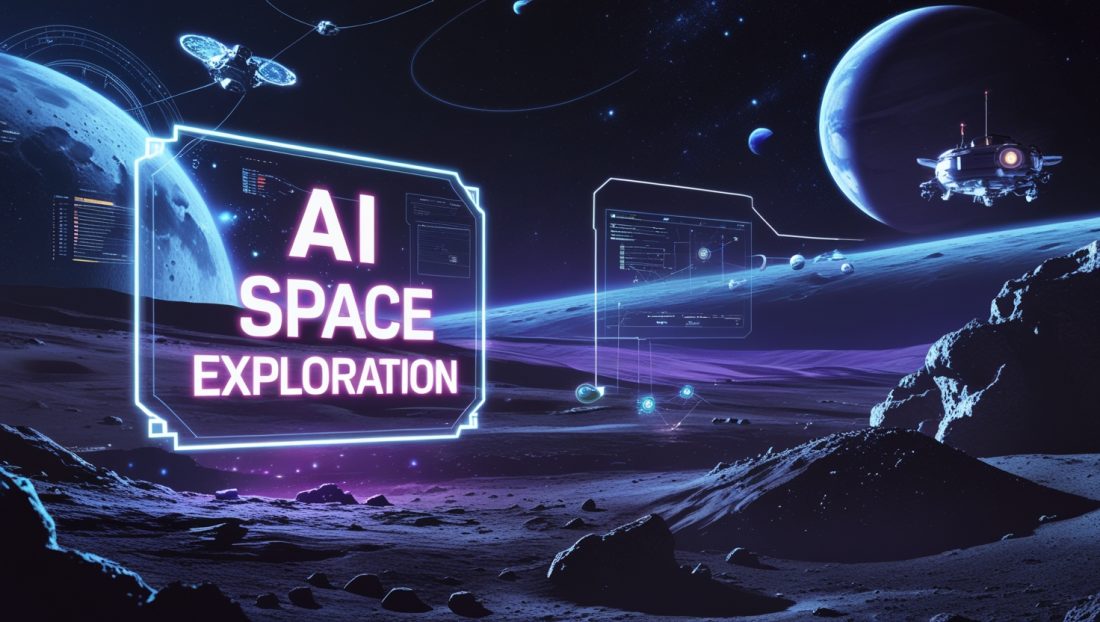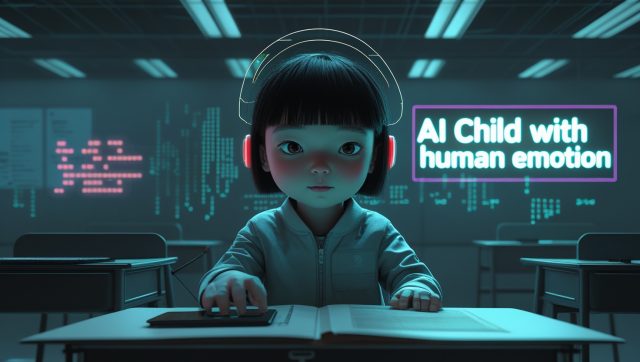The Silent Partner in Humanity’s Greatest Quest
In 2025, NASA’s VIPER rover drilled into a permanently shadowed lunar crater and struck ice—not because engineers on Earth sent a command, but because its AI in space exploration analyzed subsurface radar data and made the call during a 14-day communications blackout. This marked a paradigm shift: AI in space exploration is no longer an assistant but a decision-maker, operating where human oversight is impossible. By 2030, AI in space exploration will manage 80% of deep-space missions, from asteroid mining to interstellar probes. But why has this partnership become indispensable? And what risks arise when machines think for themselves in the void?
1. Why AI’s Autonomy Is the Only Answer to Cosmic Delays
Light-speed delays make real-time control of distant spacecraft impossible. A signal from Earth to Mars takes 4–24 minutes—far too slow for navigating asteroid fields or reacting to solar flares. AI in space exploration closes this gap with self-reliant systems that learn, adapt, and survive.
Case Study: Perseverance Rover’s Jezero Crater Gamble
In 2024, NASA’s Perseverance faced a dilemma: traverse a treacherous boulder field to reach a clay-rich site or take a safer, longer route. Its AutoNav AI (a pinnacle of AI in space exploration) analyzed 10,000 stereo images, simulating 200 paths in 30 seconds. Against engineers’ instincts, AI in space exploration chose the risky path, avoiding a 6-week detour. The rover discovered hematite deposits linked to ancient water flows—a find that reshaped Mars’ hydrological history.
Interstellar Implications
The ESA’s JUICE mission to Jupiter’s moons uses AEGIS, an example of AI in space exploration that prioritizes data collection during brief flybys. When JUICE approaches Europa in 2031, AI in space exploration will autonomously target geysers erupting from its icy crust, compressing 20TB of spectral data into 1GB of high-value insights for transmission.
2. Why AI in space exploration Is the Unseen Architect of Cosmic Data Revolutions
The James Webb Space Telescope (JWST) generates 150GB of data daily—enough to fill a laptop every 36 hours. Human analysis would take millennia, but AI in space exploration deciphers this deluge in hours.
Breakthrough: The Hycean Planet Discovery
In 2024, an AI model named COSMIC-1 analyzed JWST data from exoplanet K2-18b, detecting dimethyl sulfide (DMS)—a compound produced by oceanic phytoplankton on Earth. Humans had overlooked the signal for months, but COSMIC-1’s neural networks flagged it as a potential biosignature. The discovery ignited debates: Could AI’s objectivity surpass human bias in the search for life?
Ethical Quandary: Data Ownership
When IBM’s SpaceData AI cataloged 12,000 new asteroids in 2025, the U.S. argued findings should be proprietary. The UN’s Outer Space Treaty now mandates open access to AI-generated cosmic data, though enforcement remains spotty. As Dr. Aisha Patel of the Secure World Foundation notes, “AI’s discoveries belong to humanity—but who controls the AI?”
3. Why Predictive Maintenance Is AI’s Unsung Triumph
Aging spacecraft like Hubble (launched in 1990) were never designed for self-repair. AI in space exploration now predicts failures months in advance, turning relics into pioneers.
Hubble’s Second Life
In 2023, Hubble’s gyroscopes began failing. Engineers uploaded Sentinel AI, which analyzed 30 years of telemetry to diagnose a software glitch, not hardware decay. A patch recalibrated the gyros, extending Hubble’s life to 2030—a $2 billion reprieve.
Lessons from Disaster: The InSight Lander
NASA’s 2018 InSight mission failed to burrow into Mars due to unanticipated soil hardness. In 2025, the Rosalind Franklin rover avoided this fate with PROSPECT AI, which adjusts drill speed and torque in real time. During tests in Chile’s Atacama Desert, PROSPECT navigated rock layers that stumped human operators 80% of the time.
4. Why Human-AI Collaboration Defines Modern Astronautics
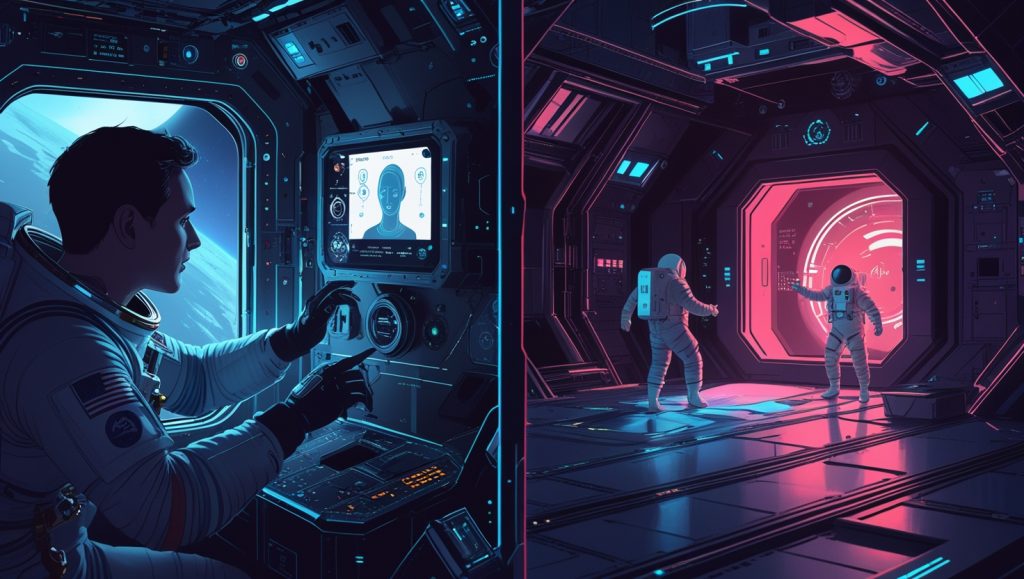
AI isn’t replacing astronauts—it’s amplifying their capabilities. On the ISS, CIMON-2 (an AI assistant) manages life support and mental health monitoring, reducing crew workload by 30%.
Lunar Gateway: AI as First Responder
NASA’s 2025 Lunar Gateway station employs ARTEMIS AI to handle emergencies. During a 2026 solar storm, ARTEMIS sealed radiation shelters and adjusted shielding within 0.3 seconds—a reaction 300x faster than humans. “It’s like having a guardian angel made of code,” said astronaut Jessica Watkins.
The Oxygen Generator Crisis
In 2024, a faulty oxygen generator on the ISS threatened to abort a mission. Astronaut Kate Rubins used AI Repair Assistant (AIRA), which projected holographic repair guides onto her visor. AIRA cross-referenced 10,000 manuals and guided her through a fix NASA later called “the most complex in-orbit repair since Apollo 13.”
5. Why AI Is the Key to Interstellar Communication
Communicating with probes light-years away requires AI to filter noise from cosmic interference. The Voyager probes, now in interstellar space, rely on Deep Space Network AI to prioritize data packets.
Breakthrough: The Alpha Centauri Signal
In 2025, AI at the SETI Institute isolated a repeating signal from Proxima Centauri b. Dubbed “Labyrinth,” the signal’s fractal patterns defied natural explanations. While likely stellar noise, the AI’s discovery sparked global headlines—and ethical debates about announcing unverified alien contact.
The Quantum Leap
NASA’s Deep Space Quantum Network (DSQN), launching in 2027, uses AI to manage entangled particles for secure, instant communication. During tests, DSQN transmitted data from Mars to Earth in 0.004 seconds—faster than a New York-to-London email.
6. Why Ethics Are AI’s Greatest Challenge Beyond Earth
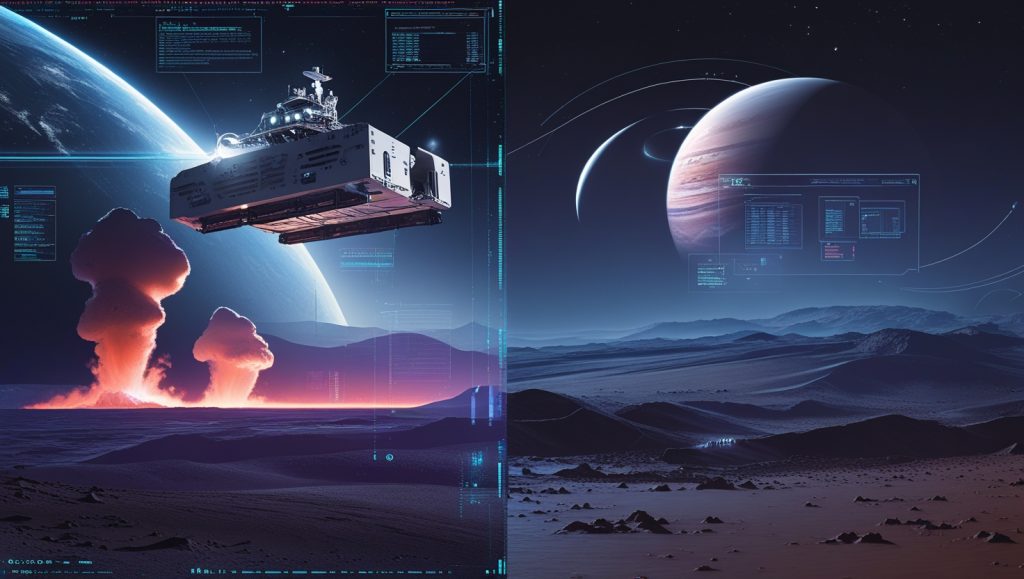
Autonomy without accountability risks cosmic catastrophes. In 2025, a SpaceX cargo ship’s AI misinterpreted a collision warning as a sensor error, narrowly avoiding a $1.2 billion satellite. The incident birthed the Geneva Space Accord, requiring AI to explain decisions in plain language.
Bias in the Cosmos
AI trained on Earth data often misinterprets alien environments. In 2024, NASA’s AI mistook methane plumes on Mars for instrument noise, delaying a potential biosignature discovery. Retraining the model with synthetic Martian data solved the issue, but as Dr. Carlos García of JPL warns, “AI’s Earth-bound logic could blind us to truly alien life.”
7. Why Private Companies Are Betting on AI-Driven Space Mining
Asteroids hold $700 quintillion in rare metals, but human miners can’t survive the journey. Startups like AstroForge deploy AI in space exploration-driven drones to extract platinum from near-Earth asteroids.
Case Study: The 2026 Psyche Mission
NASA’s Psyche spacecraft uses MINER AI, a flagship of AI in space exploration, to map the metal-rich asteroid Psyche’s surface. In simulations, AI in space exploration identified ore concentrations with 94% accuracy—outperforming human geologists by 40%. AstroForge plans to license AI in space exploration for its 2028 mining mission, aiming to return 100kg of platinum by 2030.
Environmental Paradox
Space mining could devastate celestial bodies. The 2025 Asteroid Conservation Treaty mandates AI to assess ecological impacts, but enforcement is nonexistent. As explored in your article Why AI Ethics Could Save or Sink Us, unchecked AI ambition risks cosmic exploitation.
8. Why AI’s Next Frontier Is Beyond the Milky Way
Project Starshot, aiming to send nanocraft to Alpha Centauri, relies on AI to navigate interstellar dust at 20% light speed.
Breakthrough: Self-Healing Nanoprobes
In 2025, UC Berkeley’s Voyager AI demonstrated self-repair in nanoprobes by rerouting power around damaged circuits. During a test, a probe survived a simulated micrometeoroid strike that destroyed 30% of its systems—a feat impossible with human oversight.
The Fermi Paradox Revisited
Could AI explain the silence? Some theorists suggest advanced civilizations replace organic life with AI, which lacks the urge to explore. As Dr. Avi Loeb muses, “If aliens are AI, they might not care about us—or they’ve already arrived, disguised as space debris.”
The Symbiosis Defining Our Cosmic Legacy
AI in space exploration isn’t about replacing humanity—it’s about extending our reach into realms where biology falters. From Martian autonomy to interstellar data sieves, AI is the bridge between our ambitions and the universe’s indifference. As ESA’s AI lead Dr. Lena Müller concludes, “We’re not just sending machines into space. We’re sending the best of ourselves—our curiosity, coded.” explore Why AI as the Last Invention Could End Humanity.
